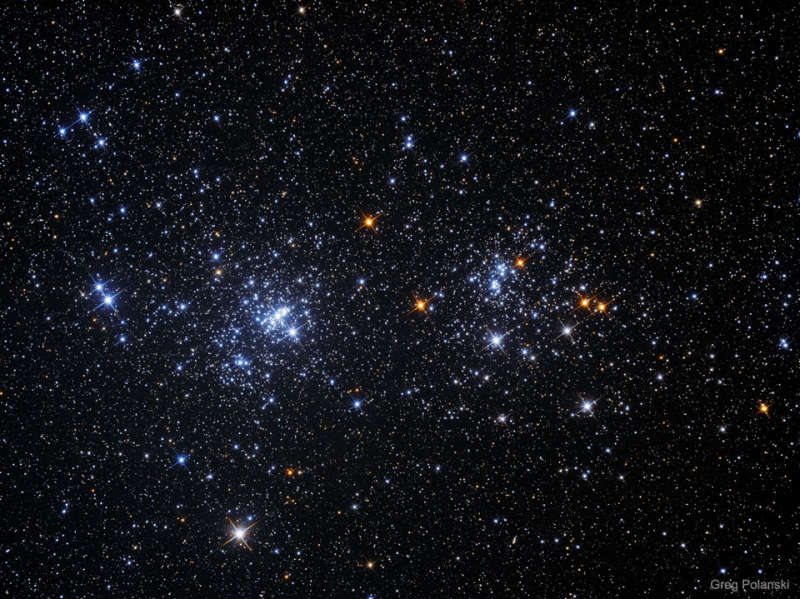Credit & Copyright: Greg Polanski
Explanation:
Most star clusters are singularly impressive.
Open clusters NGC 869 and NGC 884,
however, could be considered doubly impressive.
Also known as "h and chi Persei", this unusual
double cluster, shown above, is bright enough to be seen from a
dark location without even
binoculars.
Although their discovery surely predates
recorded history, the Greek astronomer
Hipparchus
notably cataloged the
double cluster.
The clusters are over 7,000 light years distant toward the
constellation
of Perseus,
but are separated by only hundreds of light years.
In addition to being
physically close together,
the clusters' ages
based on
their individual stars are similar - evidence that both
clusters were likely a product of the same
star-forming region.
1999 2000 2001 2002 2003 2004 2005 2006 2007 2008 2009 2010 2011 2012 2013 2014 2015 2016 2017 2018 2019 2020 2021 2022 2023 2024 2025 |
Январь Февраль Март Апрель Май Июнь Июль Август Сентябрь Октябрь Ноябрь Декабрь |
NASA Web Site Statements, Warnings, and Disclaimers
NASA Official: Jay Norris. Specific rights apply.
A service of: LHEA at NASA / GSFC
& Michigan Tech. U.
|
Публикации с ключевыми словами:
open cluster - Рассеянное скопление
Публикации со словами: open cluster - Рассеянное скопление | |
См. также:
Все публикации на ту же тему >> | |
